With the release last week of capital city population data for the 2016-17 financial year, it’s an opportune time to plot capital city population change against dwelling approvals.
At the outset, please note that dwelling approvals does not account for demolitions, thus it does not represent actual dwelling additions and overstates the level of construction that is likely to take place. Still, it does provide a useful indication of the trend in overall dwelling construction.
First, below is the national picture at the capital city level:
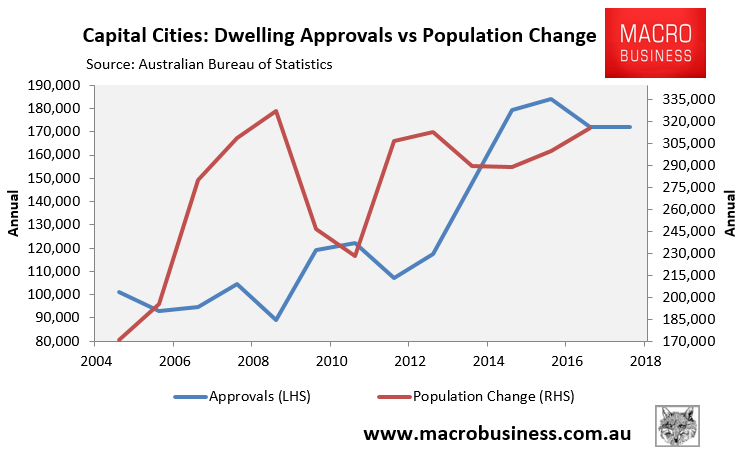
As you can see, dwelling approvals have retraced from all-time highs but remain at elevated levels. However, population growth into the capitals has accelerated and is approaching all-time highs.
Next is Sydney:
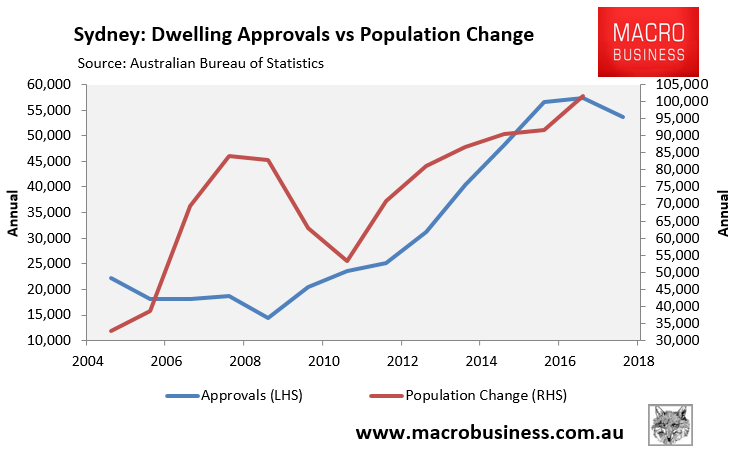
Dwelling approvals have retraced from all-time highs but remain at elevated levels. However, population growth into Sydney hit an all-time high in 2016-17, breaching 100,000 for the first time on record.
Next is Melbourne:
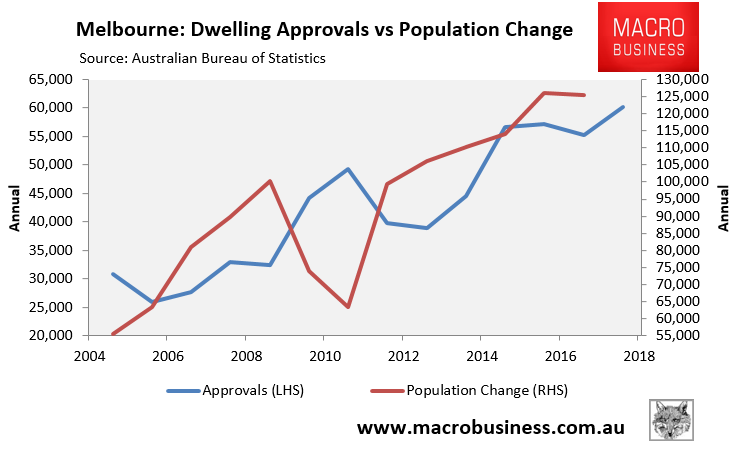
Dwelling approvals continue to rise and are at an all-time high. However, population growth has been an insane 125,000 for two consecutive years.
Next is Brisbane:
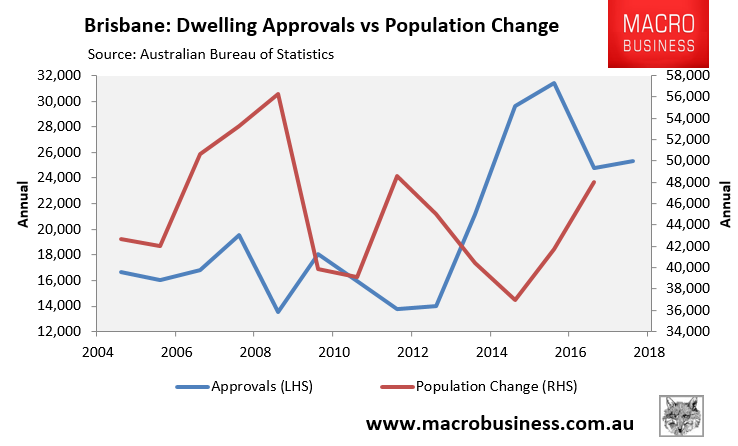
Dwelling approvals have clearly declined from the 2016 peak just as population growth has surged. After a period of significant over building, Brisbane’s housing market is becoming more balanced.
Next is Perth:
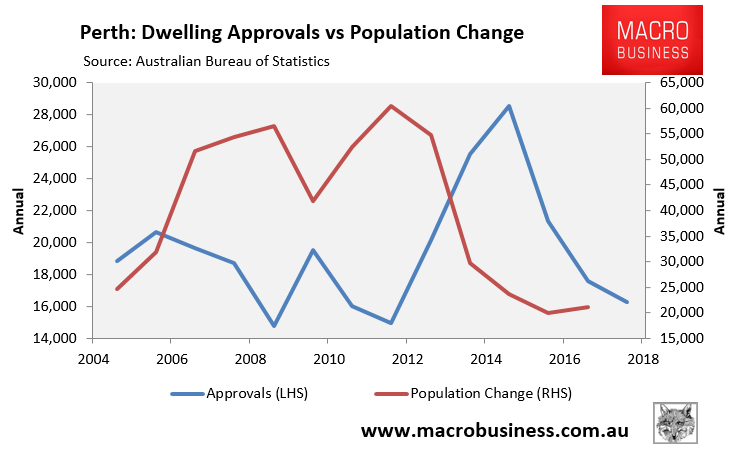
Both dwelling approvals and population growth have tanked. However, approvals are still running at a high level compared to population growth, suggesting Perth’s glut will continue.
Next is Adelaide:
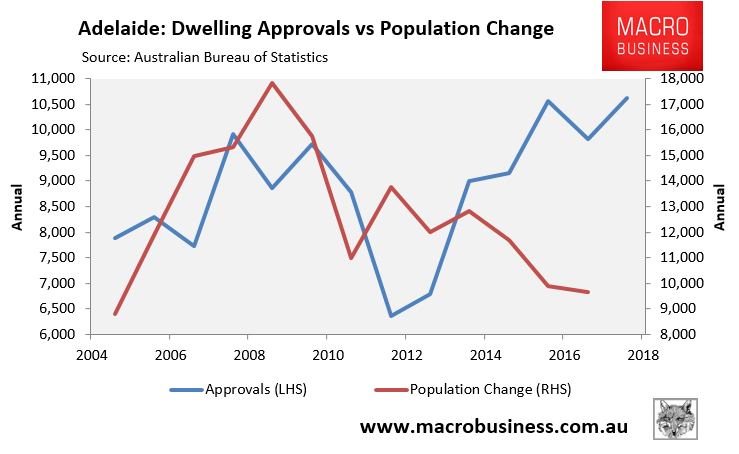
Dwelling approvals are rising just as population growth is falling. Adelaide is likely facing a glut.
Next is Hobart:
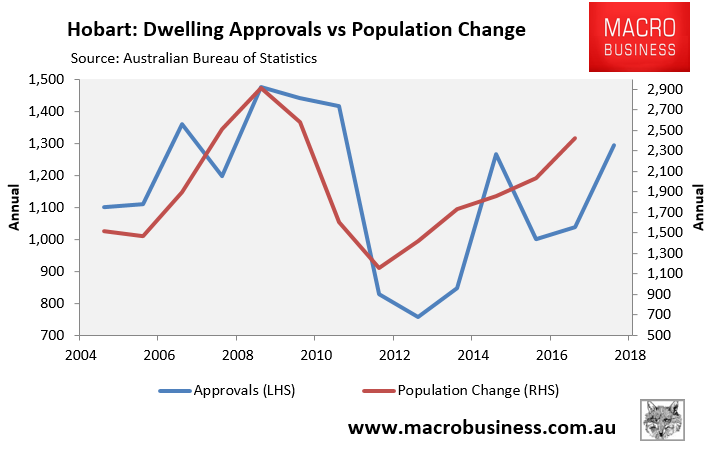
Both dwelling approvals and population growth are rising in unison. Hobart’s housing market looks quite balanced.
Next is Canberra:
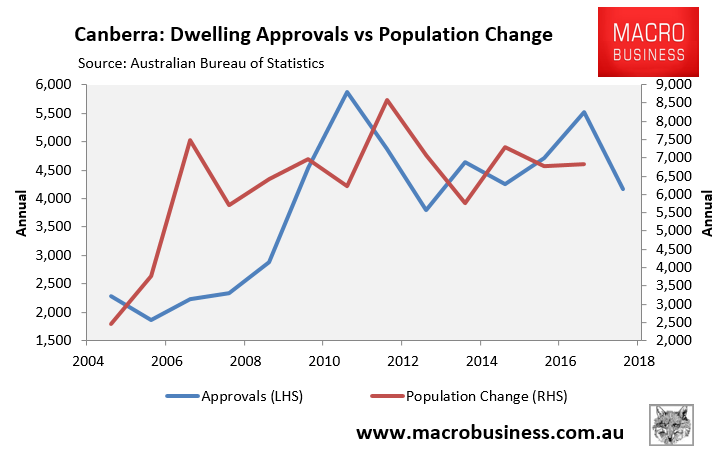
Similar to Hobart, Canberra’s housing market looks fairly balanced.
Finally here is Darwin:
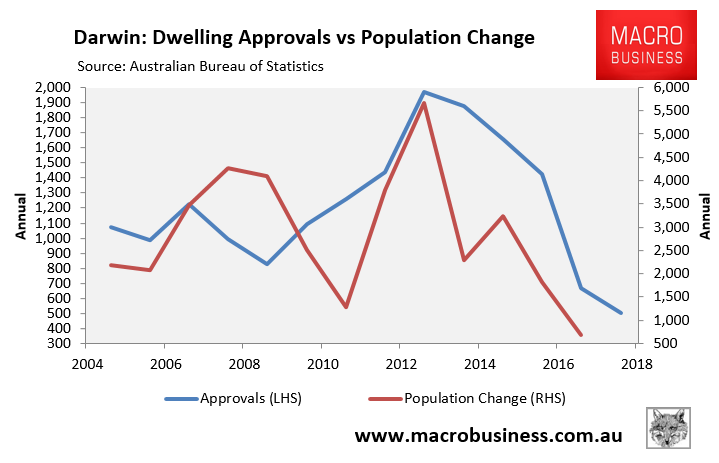
Both dwelling approvals and population growth are tanking. But like Perth, approvals are still running ahead of population growth, suggesting Darwin’s glut will continue.
To sum up, this data suggests that Melbourne’s and Sydney’s housing markets will remain fairly tight, Brisbane’s is becoming more balanced (after a period of oversupply), Hobart’s and Canberra’s are fairly balanced, Adelaide’s is moving into oversupply, and Perth’s and Darwin’s housing markets will remain oversupplied.
Again, these are just macro trends and don’t show actual dwelling additions, so take this information with a grain of salt.

